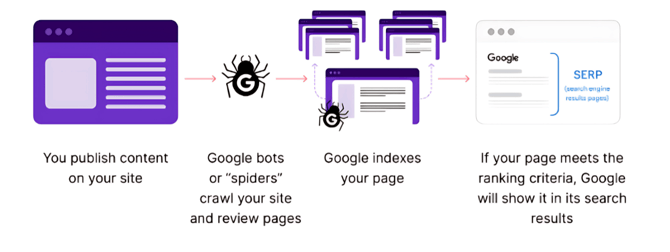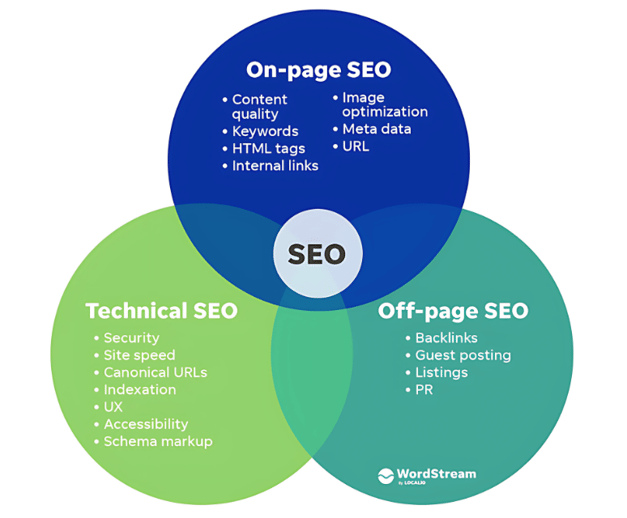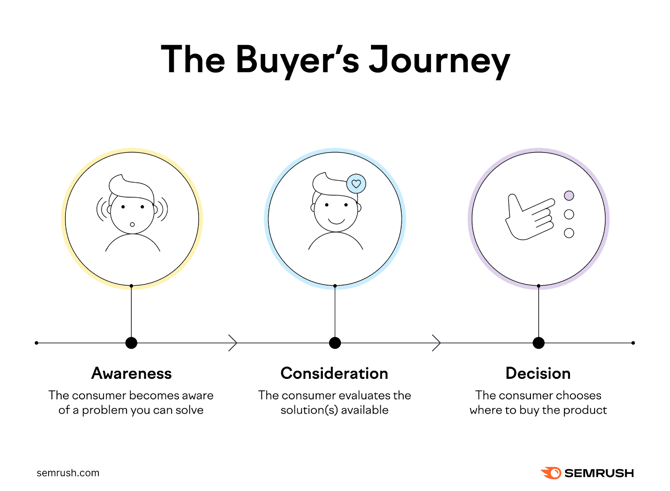Search Engine & AI Search Optimization
A complete guide to understanding search engine & AI search.
What is SEO?
Search Engine Optimization (SEO) is the practice of improving a website to increase its visibility in search engine results for relevant keywords and topics. The goal is to attract high-quality, organic traffic by ensuring that content, structure, and technical elements align with how search engines index and rank information.
What is AI Search?
AI Search refers to search technology that uses artificial intelligence, including natural language processing (NLP), machine learning, and large language models (LLMs) to understand and respond to user queries in a conversational and contextual way. Instead of listing web pages, AI search engines generate summarized answers, often pulling from multiple sources to deliver more complete information directly within the search experience.
Search Engines vs. AI Search
Traditional search engines like Google, Bing, and Yahoo use algorithms to crawl, index, and rank web pages based on relevance and authority. Users enter specific keywords, and the engine returns a ranked list of clickable results.
AI search, on the other hand, represents a shift toward intent-based and conversational discovery. Rather than just matching keywords, AI systems analyze context and meaning, often combining information from multiple sources to generate synthesized answers.
Key Differences:
-
Query Style: Traditional search relies on short keywords; AI search uses natural language questions.
-
Results: Traditional search provides a list of links; AI search generates summarized, conversational responses.
-
User Experience: Traditional search requires users to click through results; AI search delivers direct, contextual information.
-
Optimization Focus: Traditional SEO focuses on keywords and backlinks; AI optimization focuses on clarity, structure, and topical authority.
Both systems share a foundation — content must still be optimized, well-structured, and credible to appear in results. The difference lies in how users find and engage with that content.
Why Optimization is Ongoing
Search engines and AI systems both evolve constantly, updating algorithms, learning from user behavior, and redefining what “quality” means. To stay visible and relevant, businesses must continuously improve their digital presence, content, and technical performance.
AI Search Optimization (AEO & GEO)
As AI-driven search becomes more prevalent, new optimization strategies are emerging:
AEO (Answer Engine Optimization): Create structured, question-based content that AI can use directly to answer user queries.
GEO (Generative Engine Optimization): Format and enrich your content so AI models recognize, interpret, and cite it in generated summaries.
Entity Optimization: Use schema markup and consistent branding to help AI understand your business’s relevance, location, and services.
Conversational Content: Write in a way that matches how real users ask questions, not just keyword phrases.
Topical Authority: Build clusters of related pages to show expertise and depth around key subjects.
By optimizing for both traditional and AI search, your website remains visible no matter how users choose to search.
How Search Engines Work
Search engines operate in three main steps:
Crawling: Automated bots (spiders or crawlers) scour the web, following links from one page to another, collecting data about each site’s content.
Indexing: Once crawled, the content is stored in the search engine’s index — a massive database of discovered pages.
Ranking: When a user submits a query, the search engine pulls from its index and ranks pages based on relevance, quality, and user intent.
AI search tools go a step further — they analyze meaning, relationships, and context. Well-structured, optimized content gives these systems clear signals about expertise, making it easier for your site to appear as a cited or summarized source.

How Search Engines or AI Search uses content on websites:
Search engines function like digital spiders that crawl through links to find and understand every page on your site. If those links are broken, hidden, or missing, the crawler can’t find that content — which means it won’t appear in search results.
Why Interlinking Matters For Search Engines:
-
Helps guide users deeper into your site.
-
Shows AI and search engines how your content pieces relate to each other.
-
Demonstrates topical structure and expertise.
-
Improves engagement and time on site.
-
Boosts discoverability and supports SEO.
Think of search engines as digital bugs or spiders that crawl across your site, following links to find and understand pages. If important content isn’t linked properly, those “crawlers” can’t reach it — meaning it won’t be indexed or ranked effectively. Interlinking provides the pathways these bots need to explore and interpret your site’s structure.
Why It Matters For AI
For AI systems, these same links establish the relationships between topics and ideas, helping AI understand how content connects and builds authority. Clear, intentional interlinking ensures both search engines and AI models can fully interpret and leverage your site’s information.

Mobile First Priority
Mobile optimization is one of the most critical parts of modern website optimization. Search engines and AI systems prioritize websites that deliver fast, clean, and user friendly mobile experiences. With the majority of searches now happening on mobile devices, how your site performs on smaller screens determines how well it ranks and how users interact with it.
Why Mobile Optimization Matters
-
User Behavior: Most users start and end their searches on mobile. If your site doesn’t work well there, you lose potential traffic and conversions.
-
Search Engine Priority: Google’s mobile-first approach means your mobile version is the benchmark for how your site is ranked across all devices.
-
AI Systems Depend on It: AI-driven search tools like Google SGE and Bing AI read and summarize mobile content. A mobile-friendly experience ensures your information is interpreted accurately and used effectively in AI-generated results.
The Buyer Journey
Understanding the buyer journey is critical to optimization. Content should be built to meet users at each stage:
-
Awareness Stage: Users realize they have a problem or need. Create educational content that explains the issue and possible solutions.
-
Consideration Stage: Users are evaluating different options. Provide detailed service pages, comparisons, case studies, and FAQs.
-
Decision Stage: Users are ready to act. Highlight reviews, testimonials, guarantees, and strong calls-to-action.
Getting a click is only the first step. Once visitors arrive, the website must build trust, show credibility, and provide clear reasons to stay, choose this business, and convert. The goal is not just clicks, but meaningful engagement and conversions.

Final Reminder
We and our clients know more about their businesses than searchers do, so it’s our job to anticipate what users want, fill knowledge gaps, and guide them through the buyer journey.
Strong, ongoing optimization ensures visibility in both traditional search engines and AI-driven search systems, positioning our clients as trusted, authoritative sources in a rapidly changing digital landscape.
